Matheniko Game Reserve is found in the northeastern part of Uganda (Moroto District to be precise). The reserve is a major wildlife conservation area in Karamoja region. Matheniko game reserve covers an area of 590 square miles and has conditions similar to those found in Somalia and Maasai-land in Kenya. The reserve is part of the wider Karamoja wildlife protection zone which includes Pian Upe, Bokora and the vast Kidepo Valley National Park. It is close to Mount Elgon and has its own rocks that stretch up to about 6.000 feet. The area has semi-desert conditions but with rains between April and May and in November. The common vegetation are the red spike thorns, Red acacia, Harrisonia abyssinica, bushwillows and shrubs like butterfly pea and woolly caper bush.
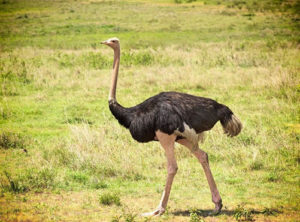 Matheniko Wildlife Reserve stands out for its beautiful landscape, unique vegetation, mountains and rocky outcrops. Despite those glowing remarks, Matheniko Wildlife Reserve like the nearby Kidepo Valley National Park is less visited. The main reason for this is the remoteness and poor infrastructure because most influential Ugandan’s originate from other parts of the country. The area has been isolated for a long time under different governments/regimes. During the colonial area, movement along the Karamoja region was restricted unless one had a permits. The Karamojong people (the dominant tribe in the region) were for long perceived as cattle rustlers by neighboring tribes. In the eighties, the Karamojong grabbed guns from an army barracks that had been left abandoned by fleeing government soldiers during a government take-over. These guns were later used to wreak havoc and grab cattle within and among the neighboring tribes all the way to Kenya and Sudan. Different methods were used by the government to crush the armed Karamojong cattle rustlers. By the time the situation was contained and peace returned to Karamoja, the damage to the image of the Karamojong and Wildlife Reserves was complete – but not entirely. Many people within and outside Uganda viewed the Karamojong as a hostile and violent people who were after their cattle. Visiting the region and wildlife conservation areas was generally considered unsafe. Time clears everything. The government has helped rebuild the image of the Karamojong and helped promote tourism in the area. After monitoring the peace process for a while most if not all embassies have now cleared their citizens to visit the region.
Matheniko Wildlife Reserve stands out for its beautiful landscape, unique vegetation, mountains and rocky outcrops. Despite those glowing remarks, Matheniko Wildlife Reserve like the nearby Kidepo Valley National Park is less visited. The main reason for this is the remoteness and poor infrastructure because most influential Ugandan’s originate from other parts of the country. The area has been isolated for a long time under different governments/regimes. During the colonial area, movement along the Karamoja region was restricted unless one had a permits. The Karamojong people (the dominant tribe in the region) were for long perceived as cattle rustlers by neighboring tribes. In the eighties, the Karamojong grabbed guns from an army barracks that had been left abandoned by fleeing government soldiers during a government take-over. These guns were later used to wreak havoc and grab cattle within and among the neighboring tribes all the way to Kenya and Sudan. Different methods were used by the government to crush the armed Karamojong cattle rustlers. By the time the situation was contained and peace returned to Karamoja, the damage to the image of the Karamojong and Wildlife Reserves was complete – but not entirely. Many people within and outside Uganda viewed the Karamojong as a hostile and violent people who were after their cattle. Visiting the region and wildlife conservation areas was generally considered unsafe. Time clears everything. The government has helped rebuild the image of the Karamojong and helped promote tourism in the area. After monitoring the peace process for a while most if not all embassies have now cleared their citizens to visit the region.
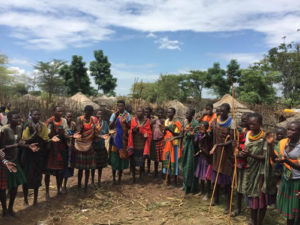 The recent discovery of Gold in the Matheniko county has helped put focus on the area and its wildlife. The Uganda Wildlife Authority has taken advantage of this new found positive publicity to market the Matheniko game Reserve and entire Karamoja Region as a worthwhile destination in Uganda. With Uganda’s growing Tourism industry, the reserve has become a magnet for those who wish to experience something different. The Uganda Wildlife Authority is stepping up its game in the park. The infrastructure particularly roads within and outside the reserve are being revamped while hotels are being set up to cater for the ever increasing number of people eager to discover this once isolated part of Africa.
The recent discovery of Gold in the Matheniko county has helped put focus on the area and its wildlife. The Uganda Wildlife Authority has taken advantage of this new found positive publicity to market the Matheniko game Reserve and entire Karamoja Region as a worthwhile destination in Uganda. With Uganda’s growing Tourism industry, the reserve has become a magnet for those who wish to experience something different. The Uganda Wildlife Authority is stepping up its game in the park. The infrastructure particularly roads within and outside the reserve are being revamped while hotels are being set up to cater for the ever increasing number of people eager to discover this once isolated part of Africa.
In 30 years’ time, Matheniko will most likely be merged with Pian Upe and Bokora game reserves to form part of Kidepo Valley National Park. If this happens, the area would rival the best of Tanzania and Kenya.
Animals in Matheniko Wildlife Reserve
The animals and plants found in Matheniko Wildlife Reserve consist of mainly those that can survive in harsh conditions. The area is semi-arid for a great part of the year with high temperatures and little rainfall. The animals and plants must be able to say for long periods without water. Despite this, the animal and wildlife population is respectable, though scattered in smaller groups and not as dense as in the larger game parks like Kidepo Valley or Murchison Falls. 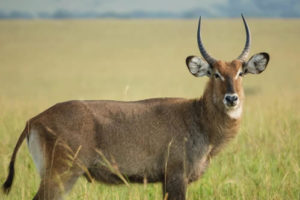 The predators include serval cats, wild cats, hyenas, jackals, cheetahs, civets, Leopards and jackals. The primate population include patas monkeys, baboons and vervet monkeys. Antelopes rule this reserve and include dik-dik, eland, mountain reedbuck, roan antelope, Uganda kob, Oribi, Bright’s gazelle, Topi, duikers and waterbuck. Matheniko Wildlife reserve has Cape Buffalo. The reptile collection is impressive including geckos, skinks, chameleons, puff adders, small lizards, large monitor lizards, water snakes and large rock pythons. Many of these animals like the blue duikers, bohor reedbuck, Bright’s gazelle, elands, cheetah, Lesser kudu, mountain reedbuck, roan antelope, serval cats, stripped hyena, Topi and wildcats are rare outside the Karamoja region. Other animals like Giraffe from Kidepo Valley National Park and Pian Upe wildlife reserve visit during certain months of the year.
The predators include serval cats, wild cats, hyenas, jackals, cheetahs, civets, Leopards and jackals. The primate population include patas monkeys, baboons and vervet monkeys. Antelopes rule this reserve and include dik-dik, eland, mountain reedbuck, roan antelope, Uganda kob, Oribi, Bright’s gazelle, Topi, duikers and waterbuck. Matheniko Wildlife reserve has Cape Buffalo. The reptile collection is impressive including geckos, skinks, chameleons, puff adders, small lizards, large monitor lizards, water snakes and large rock pythons. Many of these animals like the blue duikers, bohor reedbuck, Bright’s gazelle, elands, cheetah, Lesser kudu, mountain reedbuck, roan antelope, serval cats, stripped hyena, Topi and wildcats are rare outside the Karamoja region. Other animals like Giraffe from Kidepo Valley National Park and Pian Upe wildlife reserve visit during certain months of the year.
Like most parts of Uganda, Matheniko Game Reserve is a birders paradise. The reserve is home to the ostrich, Abyssinian Ground Hornbill, African hill barbler, Black throated wattle eye, Black-headed plover, Bronze napped pigeon, Cattle egret, Clapperton’s Francolin, Dusky turtle dove, Eastern Bronze-napped Pigeon, Egyptian Vulture, Ethiopian swallow, Grey cuckoo shrike, Hartlaub’s Turaco, Lemon dove, Mountain Yellow Warbler, Pygmy Falcon, Red-billed Oxpecker, Thick-billed Honey guide and Verreaux’s Eagle.
When is the best time to visit?
Matheniko Wildlife Reserve is open to visitors throughout the year. The Reserve receives most visitors during the dry season – December to January and June to September. There are fewer visitors during the rainy season because of the poor park roads. The roads are few and not well maintained consisting mainly of murram. These become very slippery with some sections impassable after heavy rains.
The best time to visit is shortly after the rains have stopped. This is the time when the park is still very green and extremely beautiful offering amazing photo opportunities of the vast mountains, rocks, valleys and shrubs.
Attractions in Matheniko Game reserve
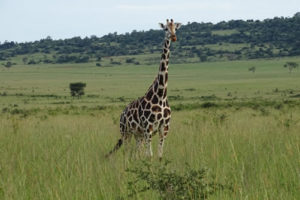 Game Drives and Sport-hunting: As already noted earlier, the reserve is home to a respectable collection of wildlife including large cats and antelopes. Sport-hunting is controversial among wildlife conservationists but has become popular in Matheniko wildlife reserve. Large game hunters find the terrain suitable for hunting down antelopes for sport and to help control over population. Uganda The Wildlife Authority has an agreement with Karimojong Overland Safaris and Karamoja Safari to manage sport hunting in the region. Those interested in standard game drives need to first register with the office in Moroto town. After registration, a Guide is assigned to escort visitors to the park.
Game Drives and Sport-hunting: As already noted earlier, the reserve is home to a respectable collection of wildlife including large cats and antelopes. Sport-hunting is controversial among wildlife conservationists but has become popular in Matheniko wildlife reserve. Large game hunters find the terrain suitable for hunting down antelopes for sport and to help control over population. Uganda The Wildlife Authority has an agreement with Karimojong Overland Safaris and Karamoja Safari to manage sport hunting in the region. Those interested in standard game drives need to first register with the office in Moroto town. After registration, a Guide is assigned to escort visitors to the park.
Mountain and Rock Climbing: The Karamoja plateau is marked by countless massive rocks and mountains. Climbing one of the large rocks in Matheniko Wildlife Reserve can be an alternative to hiking the more difficult mountains like Elgon or the Rwenzori ranges. This is particularly true for first time hikers. Climbing to the top of one of the rocks in Matheniko Wildlife Reserve will present you with picturesque views of the vast Karamoja plains and wildlife.
Cultural Visits: For a more complete safari in Matheniko game Reserve, once can go and visit the amazing Karamojong people. Their culture, values and traditions are unique and unspoiled. 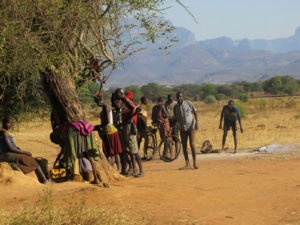 This is because they have lived in isolation longer than other Ugandan tribes. The Karamojong resist any attempt at modernization. They have been pastoralists since time memorial and depend on their animals for most of their dietary and economic needs. The Karamojong have an intriguing dress code with artificially made facial and body scars that signify beauty. The women put on beautiful beads to enhance their appearance. Like any human society, they have artists and pieces for sale to tourists at reasonable prices. Perhaps the most crowing thing to a Karamojong village is attending a cultural dance show. If you have visited the Maasai people, then you may have an idea of what the Karamojong dance is about.
This is because they have lived in isolation longer than other Ugandan tribes. The Karamojong resist any attempt at modernization. They have been pastoralists since time memorial and depend on their animals for most of their dietary and economic needs. The Karamojong have an intriguing dress code with artificially made facial and body scars that signify beauty. The women put on beautiful beads to enhance their appearance. Like any human society, they have artists and pieces for sale to tourists at reasonable prices. Perhaps the most crowing thing to a Karamojong village is attending a cultural dance show. If you have visited the Maasai people, then you may have an idea of what the Karamojong dance is about.
Visiting the Matheniko Community Conservation and Beekeeping Project: This projects works within the Mount Moroto area just outside the Matheniko Game Reserve. Three tribes (The Turkana, Tepeth and Matheniko) have been enclosed by the Mount Moroto forest reserve. The project is designed to enhance local capacities for self-reliance and stop illegal logging for charcoal and firewood. In the past, the three tribes would collect honey in the forest using destructive methods like cutting down cedar trees or smoking out the bees from their hives before harvesting. The project teaches the communities how to use modern bee keeping methods that are sustainable. It is hoped that these modern bee keeping methods will help protect the Eco-system while also helping raise income for the community.
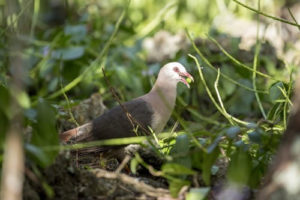 Rock paintings: Matheniko game Reserve is dominated by rocks. Some of the paintings date back to about 3,500 years ago. While visiting the reserve, an arrangement can be made to go and spot some of these paintings. The Nilotics and Kushites were responsible for these great works of art. The paintings offer an idea of what life was then and what kind of animals roamed the plains then.
Rock paintings: Matheniko game Reserve is dominated by rocks. Some of the paintings date back to about 3,500 years ago. While visiting the reserve, an arrangement can be made to go and spot some of these paintings. The Nilotics and Kushites were responsible for these great works of art. The paintings offer an idea of what life was then and what kind of animals roamed the plains then.
Camping: Those who are interested in experiencing the beautiful African sky/galaxy, majestic sunrise and romantic sunset will find no other better place than the Matheniko Wildife Reserve. Camping during the dry season offers a clear view of the galaxies and milky way.
Important Information about visiting Matheniko Wildlife Reserve
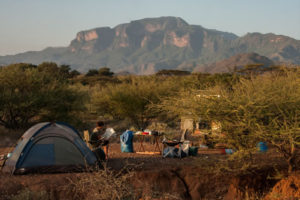 Transportation: It is important to use only 4X4 cars especially when visiting during the rainy season. The car should be air conditioned because the area is hot for most parts of the year leaving behind dusty roads.
Transportation: It is important to use only 4X4 cars especially when visiting during the rainy season. The car should be air conditioned because the area is hot for most parts of the year leaving behind dusty roads.
Accommodation: There are few good accommodation facilities close to Matheniko Wildlife Reserve. One should expect to sleep in public campsites and cook their own meals while within the reserve. If one needs more comfortable facilities, they can choose to stay in the larger hotels in Kotido or Moroto town. From the hotels, one can go for activities in the reserve early each morning. Camping within the game reserve offer a level of privacy and access to wildlife that may not be possible in the larger national parks.
